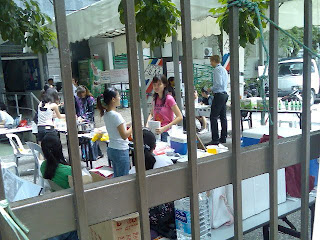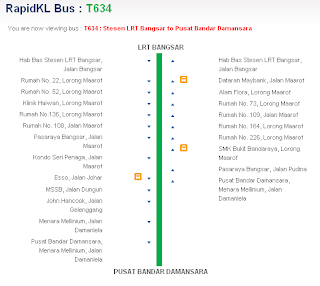This format is very widely use by psychologists. Needless to say, this is the one and only format that you must use when taking subjects under the Psychology department.
As copied from the Department of Psychology.
How to write a report according to the APA format
- A guide for 200/300 level subjects
Method
1) Journal reference:
Author, A. (date). Title of article. Title of Journal, vol, pp.-pp.
Wine, J. (1971). Test Anxiety. Psychological Bulletin, 76, 92-104.
2) Book reference:
Author, A. (date). Title of book. Location: Publisher
Thorndike, E.L. & Lorge, I. (1944). The teachers wordbook of 30,000 words. New York: Columbia University Teachers’ College.
3) Chapter in an edited book:
Author, A. (date). Title of chapter. In B. Editor (Ed.). Title of book (pp-pp). Location: Publisher.
Rachman, S.J. (1976). Observational learning and therapeutic modelling. In M.P. Feldman & A. Broadhurst (Eds.). Theoretical and experimental bases of behaviour therapies (pp.245-295). London: John Wiley & Sons.
4) Magazine/Newspaper:
Author, A. A. (year, month date). Title of article. Title of magazine, volume, pp.-pp.
Smith, S. (2000, April 9). Anxiety. Time, 135, 28-31.
5) Lecture:
Lecturer, A. (year, month). Title of lecture. Lecture presented to class, name of institution.
Waterman, M. (1995, July). Thought and language. Lecture presented to Psychology 111, University of ABC.
6) World Wide Web sources:
Author / Organization. (date). Title of article. Date retrieved from the World Wide Web: URL address.
National Consumers League. (1997). Helping seniors targeted for telemarketing fund. Retrieved
February 3, 1999, from http://www.fraud.org/elderfraud/helpsen.htm.
a. If there is no author/organization, then just start with the title of the article. Example:
Helping seniors targeted for telemarketing fund. Retrieved February 3, 1999 from the World
Wide Web: http://www.fraud.org/elderfraud/helpsen.htm.
b. If there is no author/organization and no title, then just list the website address. However, it is not very safe to cite a website that does not list an author/organization and title. Be wary of websites that do not seem to have legitimate sources.
7) Online journal article:
Author (date). Title of article. Title of Journal, vol. Date retrieved from URL.
Smith, I. A. (2000). A Buddhist response to the nature of human rights. Journal of Buddhist
Ethics, 8(4). Retrieved February 20, 2001, from http://www.cac.psu.edu/jbe/twocont.html
8) A print journal or newspaper article retrieved from an online database:
Author (date). Title of article. Title of Journal, vol, pp-pp. Date retrieved from XXX database.
Vello, J.A. & Cohen, D. (1999). Patterns of individualism and collectivism across the
United States. Journal of Personality and Social Psychology, 77, 279-292. Retrieved
September 18, 2002 from PsycARTICLES database.
Nevid, J.S., Spencer, A.R., & Green, B. (2000). Abnormal psychology in a changing
world (4th ed.). New Jersey, USA : Prentice Hall.



















